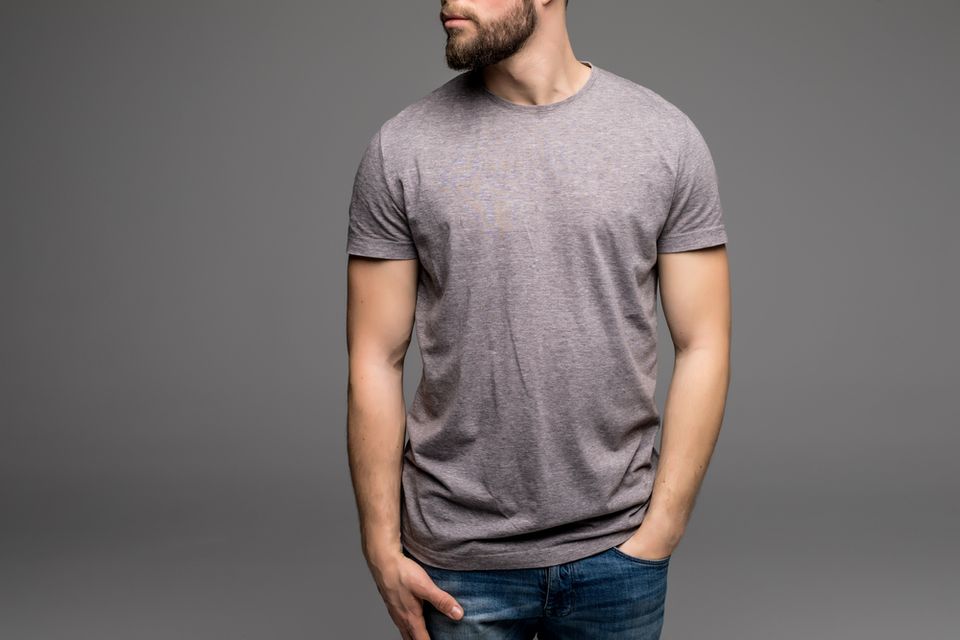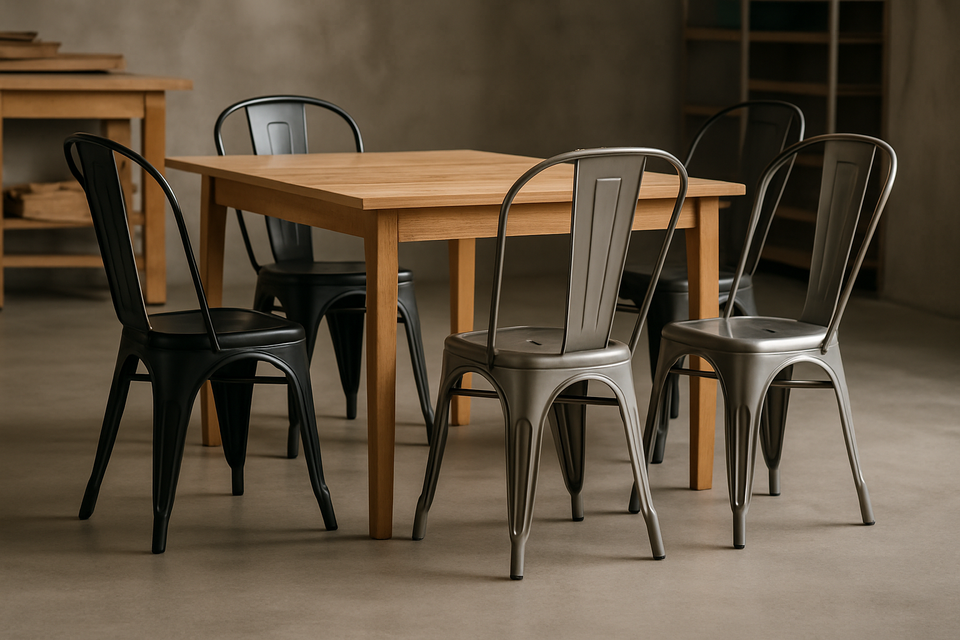How To Choose The Right Bed Size For A Master Bedroom?

Your bedroom is your sanctuary, and your bed is the focal point of the room. Choosing the right bed size for your master bedroom with correct amazon king sheets is an important decision that can have a big impact on the overall look and feel of the room. With so many different bed sizes available, it can be tough to know which one is right for you. This guide will help you choose the right bed size for your master bedroom so you can create a comfortable and stylish space.
Choosing the right bed is essential for a good night's sleep and overall well-being. Here are some factors to consider when selecting the right bed:
Bed Size
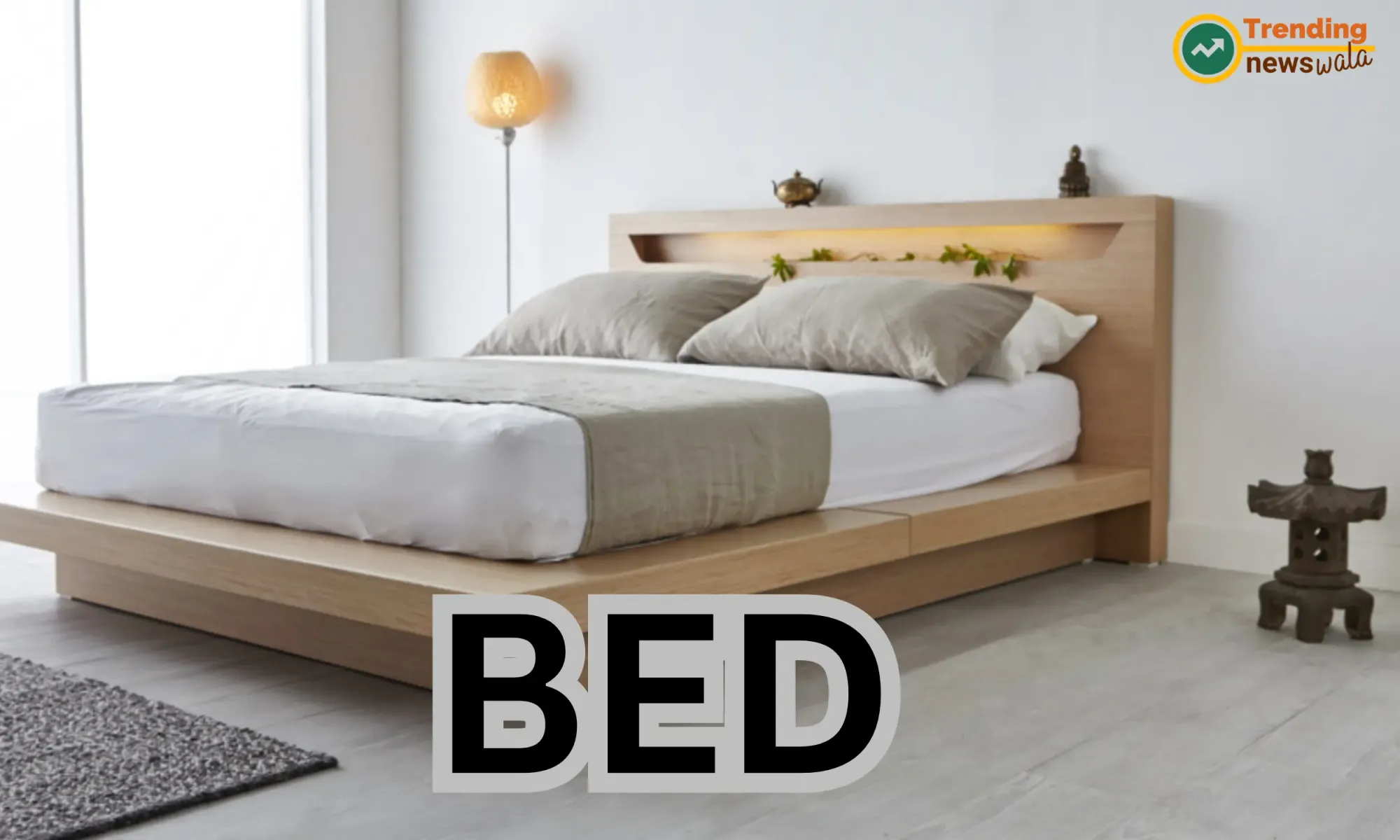
Bed sizes can vary by region and manufacturer, but here are some common bed sizes used in the United States:
- Twin Bed: Also known as a single bed, a twin bed is typically 38 inches wide and 75 inches long. It's suitable for one person and is often used in children's bedrooms or guest rooms.
- Twin XL Bed: Slightly longer than a standard twin bed, a twin XL bed measures 38 inches wide and 80 inches long. It's commonly found in college dorms and is ideal for taller individuals.
- Full Bed: A full bed, also known as a double bed, is 54 inches wide and 75 inches long. It can accommodate one or two people, but it may be a bit cozy for two adults.
- Queen Bed: A queen bed is 60 inches wide and 80 inches long. It's a popular choice for couples and provides more room for sleeping comfortably.
- King Bed: A standard king bed, also known as an Eastern king, is 76 inches wide and 80 inches long. It offers ample space for two adults and is the widest commonly available bed size.
- California King Bed: A California king bed is slightly narrower than a standard king but longer, measuring 72 inches wide and 84 inches long. It's a good choice for taller individuals or those who prefer extra length.
- Split King Bed: A split king bed is essentially two twin XL mattresses placed side by side on a king-size adjustable bed frame. This option allows each person to customize their side of the bed for comfort and is commonly used with adjustable bases.
- Super King Bed: Super king beds are larger than standard king beds and can vary in size. They offer even more space for couples who want extra room to spread out.
It's important to note that bed sizes may vary in different countries, and custom or specialty sizes are also available. When choosing a bed size, consider your room space, the number of sleepers, and individual comfort preferences. Additionally, the bedding and linens you choose should be appropriate for the bed size.
Firmness
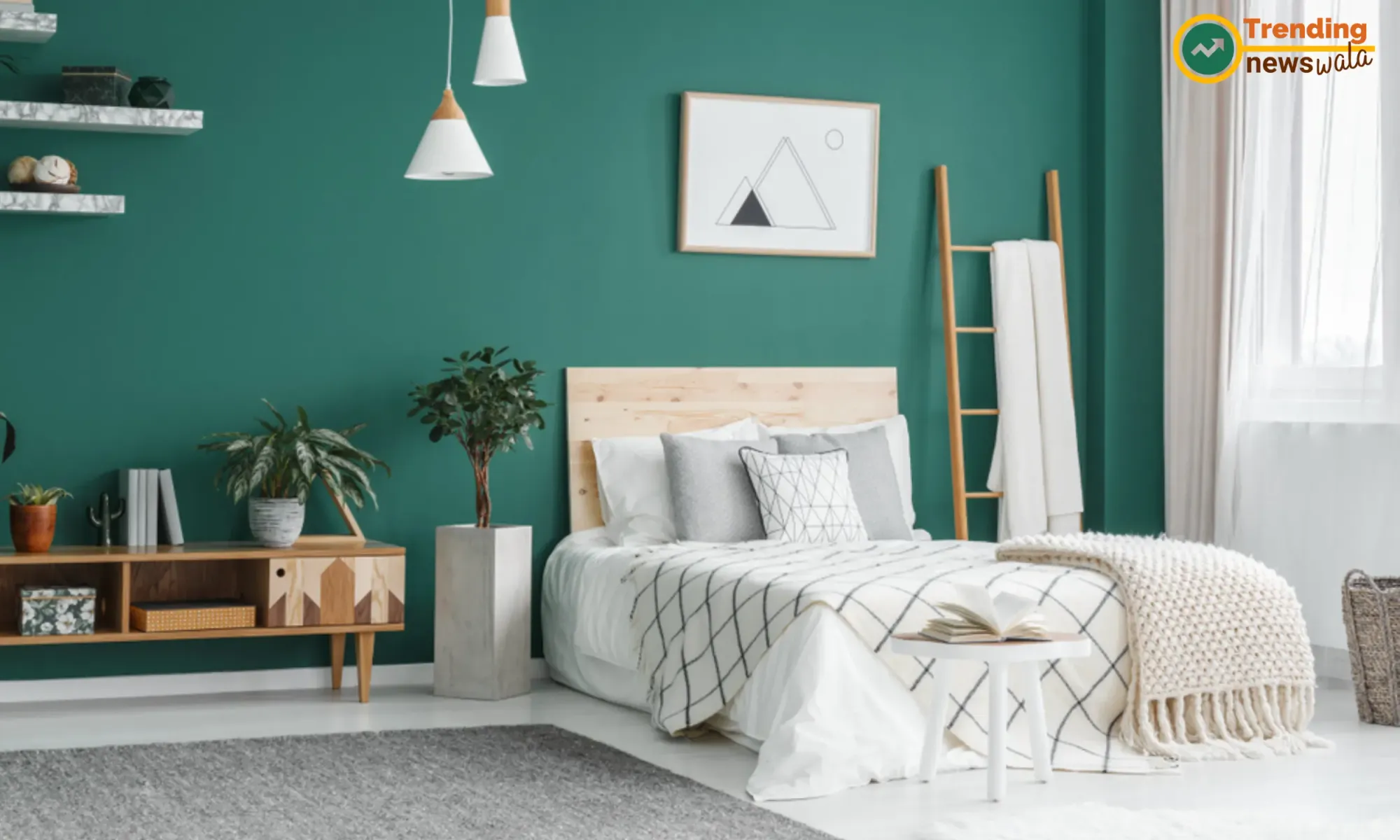
Firmness in the context of bedding, particularly mattresses, refers to how soft or hard a mattress feels when you lie down on it. It is a critical factor in determining comfort and support and plays a significant role in the quality of your sleep. Mattresses come in a range of firmness levels, and choosing the right level of firmness is essential for getting a good night's sleep.
Here are some common firmness levels and their characteristics:
- Soft: Soft mattresses provide a plush and cushioning feel. They conform closely to your body's contours and are often preferred by side sleepers and those who enjoy a "sinking in" feeling. Soft mattresses may not offer as much support to certain areas of the body.
- Medium: Medium-firm mattresses strike a balance between comfort and support. They provide a combination of cushioning and support, making them a popular choice for a wide range of sleepers, including back and stomach sleepers.
- Firm: Firm mattresses have a more solid and supportive feel. They are designed to maintain a flatter and more even surface, which can be beneficial for back and stomach sleepers who require additional support to maintain proper spinal alignment.
- Extra Firm: Extra firm mattresses are the firmest option available. They provide very little cushioning and are often chosen by sleepers who need substantial support, such as those with back pain or heavier individuals.
When choosing the right firmness level for your mattress, consider the following factors:
- Sleeping Position: Your sleeping position significantly influences the ideal firmness level. Side sleepers usually prefer a softer mattress, while back and stomach sleepers typically benefit from a firmer mattress. Combination sleepers might opt for a medium-firm mattress that accommodates various positions.
- Body Weight: Your body weight can impact how a mattress feels. Heavier individuals may find that a firmer mattress provides better support, while lighter individuals might find a medium-firm mattress more comfortable.
- Personal Preference: Ultimately, personal comfort is paramount. Your ideal firmness level is subjective and depends on your personal preferences for how a mattress feels.
- Specific Needs: Consider any specific health or sleep-related needs. For example, people with back pain might find a medium-firm to firm mattress more comfortable, while those with pressure point issues may prefer a softer mattress.
- Mattress Type: The type of mattress you choose, such as innerspring, memory foam, latex, or hybrid, can affect how the firmness feels. Memory foam mattresses, for example, tend to contour closely to your body, affecting the perception of firmness.
Keep in mind that firmness preferences vary from person to person, so it's important to try out different firmness levels to determine which one offers you the best support and comfort for a good night's sleep. Many mattress manufacturers offer trial periods or return policies to help you find the perfect level of firmness.
Support
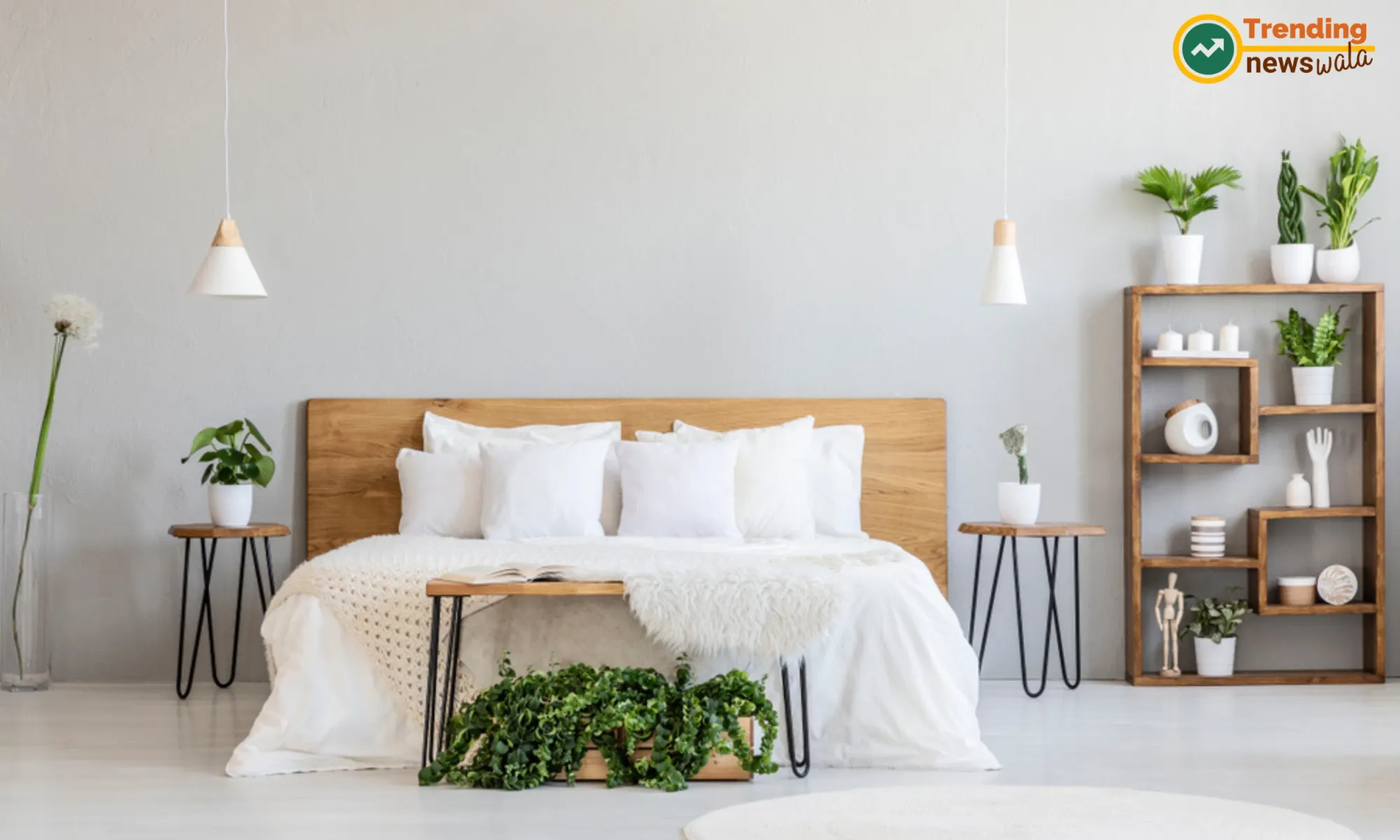
Support in the context of mattresses and bedding refers to the ability of a sleep surface to maintain proper spinal alignment and distribute body weight evenly. The level of support a mattress offers is crucial for comfort, pain prevention, and quality of sleep. Here are some key aspects related to support:
- Spinal Alignment: Proper spinal alignment is critical for a restful and pain-free sleep. A mattress with good support ensures that your spine, from the neck to the lower back, maintains a natural and straight alignment. This reduces the risk of waking up with aches and pains.
- Pressure Point Relief: Supportive mattresses distribute your body weight evenly, reducing pressure points at areas such as the shoulders, hips, and knees. This is especially important for side sleepers who may experience discomfort at these pressure points.
- Comfort and Rest: A supportive mattress provides a comfortable and restful sleep experience. It prevents you from sinking too far into the mattress (which may happen with overly soft mattresses) or feeling as though you're sleeping on a rigid surface (as with overly firm mattresses).
- Sleeping Position: The level of support required can vary depending on your sleeping position. For instance, back and stomach sleepers usually need firmer support to keep their spine properly aligned, while side sleepers may prefer a slightly softer mattress to alleviate pressure points.
- Weight Distribution: Heavier individuals often need a mattress with better support to prevent sagging and maintain proper alignment. Lighter individuals may require less support but still need proper spinal alignment.
- Mattress Type: Different mattress types offer varying levels of support. For example, memory foam mattresses conform closely to your body and provide excellent support and pressure relief. Innerspring mattresses tend to be firmer and offer good support.
- Edge Support: The supportiveness of a mattress extends to its edges. Good edge support ensures you can sit or sleep near the edge without feeling like you might roll off or experience a lack of support.
- Durability: A mattress with long-lasting support maintains its integrity over time, preventing sagging or indentations. The longevity of support is essential for mattress durability.
- Adjustable Support: Some mattresses come with adjustable support features, such as air chambers or adjustable bases, which allow you to customize the level of support to your preference.
Finding the right level of support is a balance between comfort and proper alignment. While personal preferences play a significant role, it's important to consider factors such as sleeping position, body weight, and any specific physical needs you may have. Additionally, investing in a high-quality mattress from a reputable manufacturer can help ensure consistent and reliable support throughout its lifespan.
Quality

Quality, in the context of mattresses and bedding, refers to the overall excellence, durability, and performance of the products. When it comes to sleep-related products, quality is paramount for ensuring comfort, health, and a good night's sleep. Here are some key factors to consider when assessing the quality of mattresses and bedding:
- Materials: High-quality mattresses and bedding are crafted from premium materials, including memory foam, latex, innerspring coils, and fabric. The choice of materials significantly influences durability and comfort.
- Construction: The construction of the mattress or bedding item should be robust and well-designed. For mattresses, this includes how layers are assembled and how they provide support, while for bedding, it involves factors like stitching and fabric quality.
- Durability: Quality products are built to last. They resist sagging, indentations, and wear and tear over time. Look for mattresses with good edge support and strong materials in bedding.
- Comfort: The comfort of a mattress is essential for a restful sleep. A high-quality mattress offers consistent support and cushioning, reducing pressure points and promoting relaxation.
- Support: Quality mattresses provide excellent support for proper spinal alignment. They distribute body weight evenly and reduce the risk of back and neck pain.
- Warranty: Reputable mattress manufacturers typically offer warranties that reflect their confidence in the product's quality. A generous warranty period indicates that the manufacturer stands behind the product's durability and performance.
- Certifications: Look for certifications that vouch for the product's quality and adherence to industry standards. Certifications like CertiPUR-US for foam mattresses and OEKO-TEX Standard 100 for bedding indicate that the product is free from harmful chemicals.
- User Reviews: Reading user reviews and expert opinions can help you gauge the quality of a product. Real-world experiences from other customers provide valuable insights into comfort, durability, and other factors.
- Brand Reputation: Established and reputable brands are more likely to produce high-quality products. They have a history of delivering reliable and durable bedding solutions.
- Trial Period: Many quality mattress manufacturers offer trial periods during which you can test the product in your own home. This is an indicator of their confidence in the product's quality and suitability.
- Return Policy: Ensure you understand the return policy before purchasing a mattress or bedding item. A flexible and customer-friendly return policy is often associated with quality products.
- Innovative Features: Some high-quality mattresses and bedding may come with innovative features like cooling technology, adjustable firmness, or smart compatibility, enhancing the overall sleep experience.
When investing in a mattress or bedding, consider your personal preferences, such as firmness, material, and design, while also keeping quality in mind. Quality products offer the assurance of comfortable and restful sleep for years to come.
Budget

Budget is an important consideration when purchasing mattresses and bedding. Your budget determines how much you're willing to spend on these products and can influence the options available to you. Here are some key points to consider regarding budget when shopping for mattresses and bedding:
- Set a Budget: Start by establishing a clear budget for your purchase. Determine the maximum amount you're willing to spend on a mattress, pillows, sheets, and other bedding items.
- Prioritize Essentials: Consider which items are essential and allocate a larger portion of your budget to them. For most people, the mattress is the most critical component, so it may be worth investing more in a high-quality mattress.
- Compare Prices: Research and compare prices from different retailers and manufacturers. Online shopping often allows for easy price comparisons, and you can take advantage of online sales and discounts.
- Sales and Promotions: Keep an eye out for sales events, holiday promotions, and clearance sales. These can provide an opportunity to get high-quality products at a lower cost.
- Consider Value: Instead of solely focusing on the lowest price, think about the value you're getting for your money. A slightly more expensive, higher-quality mattress may provide better comfort and durability, offering greater value in the long run.
- Financing Options: Some retailers offer financing options or payment plans that allow you to spread the cost over time. While this can make higher-priced items more affordable, be sure to understand the terms and interest rates.
- Warranties and Guarantees: Higher-quality mattresses often come with longer warranties, which can save you money on potential future repairs or replacements. Be sure to understand the terms of the warranty.
- Trial Periods: Many mattress companies offer trial periods, during which you can test the mattress in your own home. If you're not satisfied, you can return it. This allows you to invest in a quality product with confidence.
- Accessories: Don't forget to budget for bedding accessories, such as pillows, sheets, mattress protectors, and duvets. These items can add to the overall cost of creating a comfortable sleep environment.
- Plan for Long-Term Investment: Consider your mattress and bedding as long-term investments in your health and well-being. Spending a bit more on higher-quality products can pay off in terms of comfort, support, and durability.
- Personal Priorities: Your personal circumstances and priorities play a role in budget decisions. If you have specific health concerns or sleep needs, you may be willing to invest more in products that address those concerns.
Remember that while a budget is important, it's not the only factor to consider. The quality of your sleep and overall well-being depend on the comfort and support provided by your mattress and bedding, so aim for a balance between budget constraints and your sleep needs.
Bed Base

The bed base, also known as the bed frame or foundation, is an essential component of your bed setup. It provides support for your mattress, raises the mattress off the floor, and helps maintain the integrity and longevity of your sleep system. Here are some common types of bed bases:
- Platform Bed: A platform bed is a low-profile bed frame with a solid surface that eliminates the need for a box spring. It offers support for the mattress and a clean, modern look.
- Box Spring: A box spring is a traditional bed foundation that consists of a wooden or metal frame with springs covered by fabric. It's designed to absorb shock and provide extra support for innerspring mattresses.
- Adjustable Base: An adjustable bed base, also known as an adjustable bed frame, allows you to change the position of your mattress. It's often used with memory foam or latex mattresses and can be adjusted to provide different sleeping positions, such as elevated head or feet.
- Bunkie Board: A bunkie board is a slim, solid board that is placed between the mattress and the bed frame. It provides additional support and helps prevent sagging, especially with platform beds.
- Metal Bed Frame: Metal bed frames are lightweight, easy to assemble, and typically come with legs and glides. They can be used with or without a box spring.
- Wooden Bed Frame: Wooden bed frames are more substantial and often used with headboards and footboards. They provide solid support for the mattress and add an aesthetic element to the bedroom.
- Storage Bed: Some bed frames come with built-in storage options, such as drawers or shelves, which can help maximize bedroom space.
When choosing a bed base, consider the following factors:
- Mattress Type: The type of mattress you have can influence the choice of bed base. For instance, memory foam and latex mattresses can often be used with platform beds or adjustable bases, while innerspring mattresses may require a box spring or foundation for proper support.
- Room Space: The size and style of your bedroom can determine the type of bed frame that best fits your space. Consider the height and size of the bed base in relation to your room.
- Sleeping Position: Your preferred sleeping position may influence the choice of an adjustable base, which allows you to elevate the head or foot of the mattress.
- Budget: Different bed bases have varying costs, so consider your budget when making a choice. A simple metal frame may be more budget-friendly, while an adjustable base can be a more significant investment.
- Style and Aesthetics: Bed frames come in various designs and finishes. Choose one that complements your bedroom decor and personal style.
- Support and Durability: Ensure that the bed base you choose offers adequate support for your mattress and has a reputation for durability.
Ultimately, the choice of a bed base should align with your specific needs, mattress type, and bedroom decor. It's an important component in creating a comfortable and supportive sleep environment.
Bed Height

Bed height, also known as bed elevation, refers to how high the top surface of your mattress is off the ground. The height of your bed can have a significant impact on the overall aesthetics and functionality of your bedroom, as well as your comfort and accessibility. Here are some key considerations regarding bed height:
Factors Affecting Bed Height:
- Mattress Thickness: The thickness of your mattress is a primary factor influencing bed height. Thicker mattresses will elevate the sleeping surface higher off the ground.
- Bed Base or Frame: The type of bed base or frame you use can affect bed height. For example, a platform bed or low-profile frame typically results in a lower bed height, while a traditional box spring and frame combination can elevate the bed.
- Box Spring Usage: If you use a box spring with your mattress, this will add height to your bed. Some mattresses are designed to be used without a box spring, which can result in a lower bed height.
- Foundation or Bunkie Board: The use of a foundation or bunkie board under your mattress can influence bed height. These options are often used to provide additional support or raise the mattress slightly.
Key Considerations for Bed Height:
- Accessibility: Consider your ease of getting in and out of bed. A lower bed height may be more accessible for some individuals, while a higher bed may be preferred by others. Your physical abilities and any mobility issues should be taken into account.
- Bedroom Aesthetics: The height of your bed can affect the overall look and feel of your bedroom. Taller beds may make the room feel cozier and more formal, while lower beds can create a sense of spaciousness and simplicity.
- Bedding and Decor: The height of your bed should be considered in relation to your choice of bedding and bedroom decor. Higher beds may require taller headboards and more substantial bedding, while lower beds can be paired with simpler and lower-profile accessories.
- Storage and Under-Bed Space: Bed height can affect the amount of under-bed storage space available. Taller beds may offer more room for storage drawers or bins, while lower beds may limit this option.
- Bedroom Size: The dimensions of your bedroom should be considered. In smaller bedrooms, a lower-profile bed may help create a sense of space, while larger rooms can accommodate taller beds.
- Personal Comfort: Bed height can impact personal comfort. Some people may find it easier to get in and out of a higher bed, while others may prefer a lower bed for ease of access.
- Mattress Type: The type of mattress you use can affect your comfort. Memory foam and latex mattresses often work well with low-profile foundations, while innerspring mattresses may require a taller base for proper support.
Ultimately, the ideal bed height is a personal preference that should take into account your comfort, accessibility, and the aesthetics of your bedroom. Consider your unique needs and the factors mentioned above to select the right bed height for your sleeping space.
Bedroom Space

The space in your bedroom is a crucial factor when it comes to choosing the right bed, mattress, and bedroom furniture. The size and layout of your bedroom will influence your decisions on these items. Here are some key considerations regarding bedroom space:
- Room Size: Measure the dimensions of your bedroom, including its length and width. This will help you determine the available floor space for your bed and other furniture. Consider how much space you want around the bed for walking and other activities.
- Room Layout: Examine the layout of your bedroom. Note the location of doors, windows, closets, and any built-in features. These elements can impact where your bed and other furniture should be placed.
- Bed Size: Choose a bed size that fits comfortably within your bedroom space. A large bed in a small room can make the space feel cramped, while a bed that's too small in a spacious room may look out of place.
- Bed Placement: Decide where you want to place the bed in your room. Common options include against a wall, in the center of the room, or under a window. Consider factors like natural light and traffic flow.
- Furniture Arrangement: If you plan to include additional furniture like nightstands, dressers, or a wardrobe, plan their placement within the room. Ensure there's enough space for these pieces without making the room feel crowded.
- Walkways: Maintain clear and functional walkways around the bed and throughout the room. Adequate space to move around comfortably is essential for daily activities and cleaning.
- Closet Space: If your bedroom has a closet, consider its size and organization. You may need less additional storage furniture if your closet provides ample storage space.
- Room Style: The style and layout of your room should match your personal preferences. Consider the overall aesthetics of your bedroom and how the bed and furniture fit into the design.
- Additional Features: Take into account any unique features in your bedroom, such as sloped ceilings, alcoves, or architectural details. These elements can influence your choices for bed placement and room design.
- Use of Vertical Space: Maximize the use of vertical space in your room. This can involve wall-mounted shelving, tall dressers, or even a lofted bed to free up floor space.
- Mirrors: Strategically placed mirrors can create the illusion of more space and reflect natural light, making the room feel larger and brighter.
- Multifunctional Furniture: Consider multifunctional furniture pieces that can save space, such as a bed with storage drawers underneath or a fold-out desk.
- Scale and Proportion: Ensure that your chosen bed and furniture are in proportion to the size of the room. Oversized furniture in a small room can overwhelm the space, while undersized pieces may look out of place in a larger room.
Remember that a well-planned bedroom layout not only maximizes space but also creates a comfortable and visually appealing environment. It's important to strike a balance between your bedroom's functional needs and its overall design aesthetics to create a harmonious and relaxing space.
Material and Design
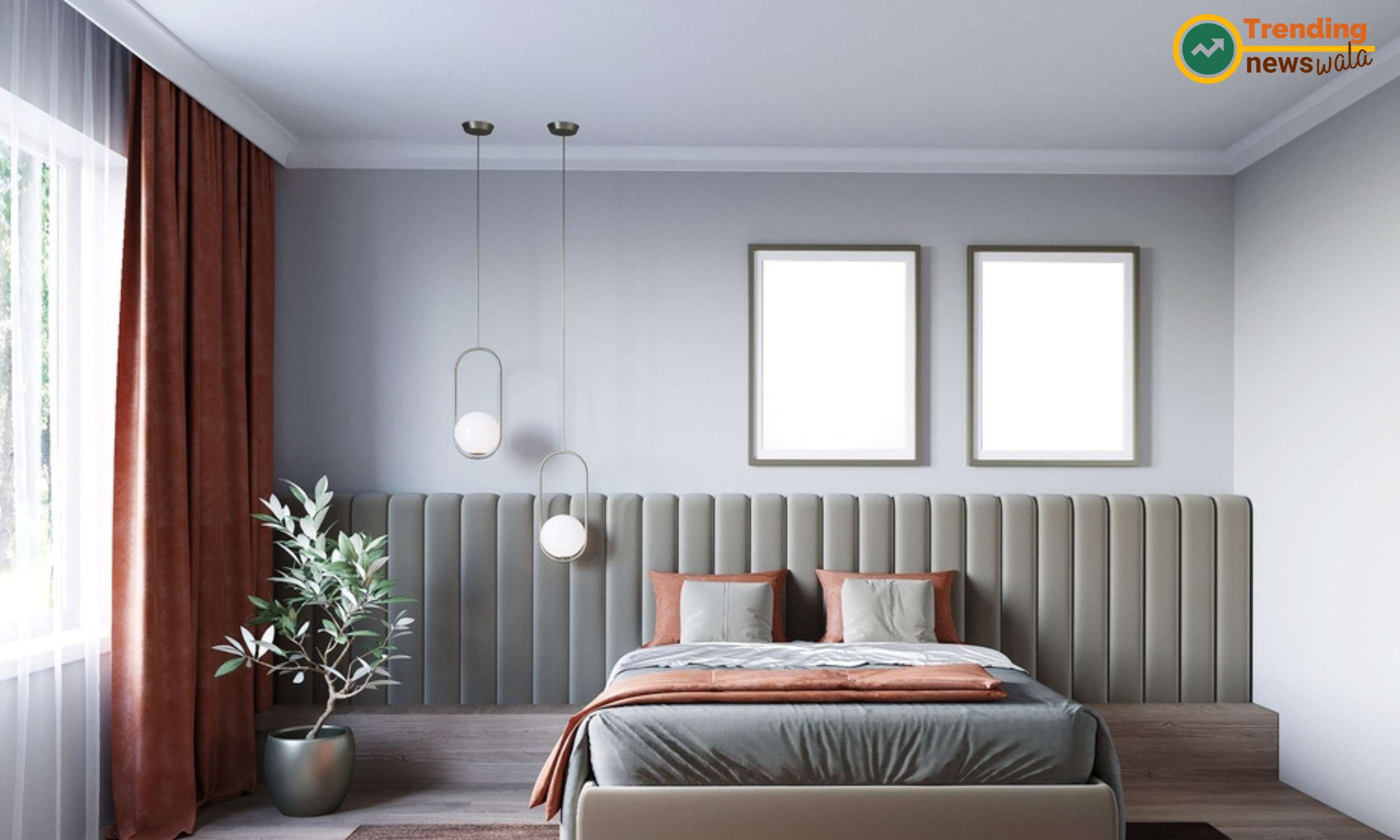
The material and design of your bed and bedroom furniture play a significant role in the overall aesthetics and functionality of your bedroom. Here are some important considerations regarding material and design choices for your bed and bedroom furniture:
Bed Material and Design:
- Wood: Wooden bed frames are a classic and versatile choice. They come in various wood types (e.g., oak, cherry, walnut) and can have different finishes, from natural to painted. Wooden bed frames can complement a variety of interior styles.
- Metal: Metal bed frames offer a sleek and modern look. They are typically durable and come in various finishes, such as black, white, or metallic colors. Metal frames can be simple or ornate, making them suitable for both contemporary and traditional designs.
- Upholstered: Upholstered bed frames have a padded fabric or leather headboard, which adds a touch of luxury and comfort. The fabric choice and color can influence the overall style of your bedroom.
- Platform: Platform beds have a low-profile design with a solid surface that eliminates the need for a box spring. They often feature clean lines and a minimalist look, making them ideal for modern and contemporary bedrooms.
- Canopy: Canopy beds have four posts with a frame that supports a canopy or drapery. They can lend a sense of romance and elegance to your bedroom. Canopy beds come in various materials, including wood, metal, and iron.
- Storage: Storage beds incorporate built-in drawers or shelves for added functionality. These beds are excellent for maximizing space in smaller bedrooms.
- Sleigh: Sleigh beds have a distinctive curved or scrolled headboard and footboard, creating a classic and timeless appearance. They are often made of wood and can enhance a traditional bedroom design.
Bedroom Furniture Material and Design:
- Dressers and Nightstands: These furniture pieces are typically made of wood and come in various styles, from rustic to contemporary. Consider the design, finish, and hardware when selecting these items.
- Wardrobes and Armoires: These larger furniture pieces can be made of wood or metal. They provide additional storage and can be a statement piece in your bedroom.
- Mirrors: Choose mirrors with frames that complement the style of your bedroom. Full-length mirrors or decorative wall mirrors can add depth and brightness to the room.
- Bedding: Consider the material and design of your bedding, including sheets, duvet covers, and pillows. The fabric, color, and pattern should harmonize with your bedroom's overall design.
- Rugs: Rugs come in various materials and designs. They can tie the room together and add warmth and comfort to your bedroom.
- Lighting: Select light fixtures and lamps that match the material and design of your bedroom furniture. Lighting can also serve as decorative elements.
- Accessories: Incorporate decorative accessories like artwork, curtains, and decorative pillows that align with the overall design theme of your bedroom.
When choosing the material and design of your bed and bedroom furniture, consider your personal style, the existing decor of your bedroom, and the ambiance you want to create. The choices you make will contribute to the overall look and feel of your bedroom, enhancing its comfort and aesthetics.
Warranty and Return Policy
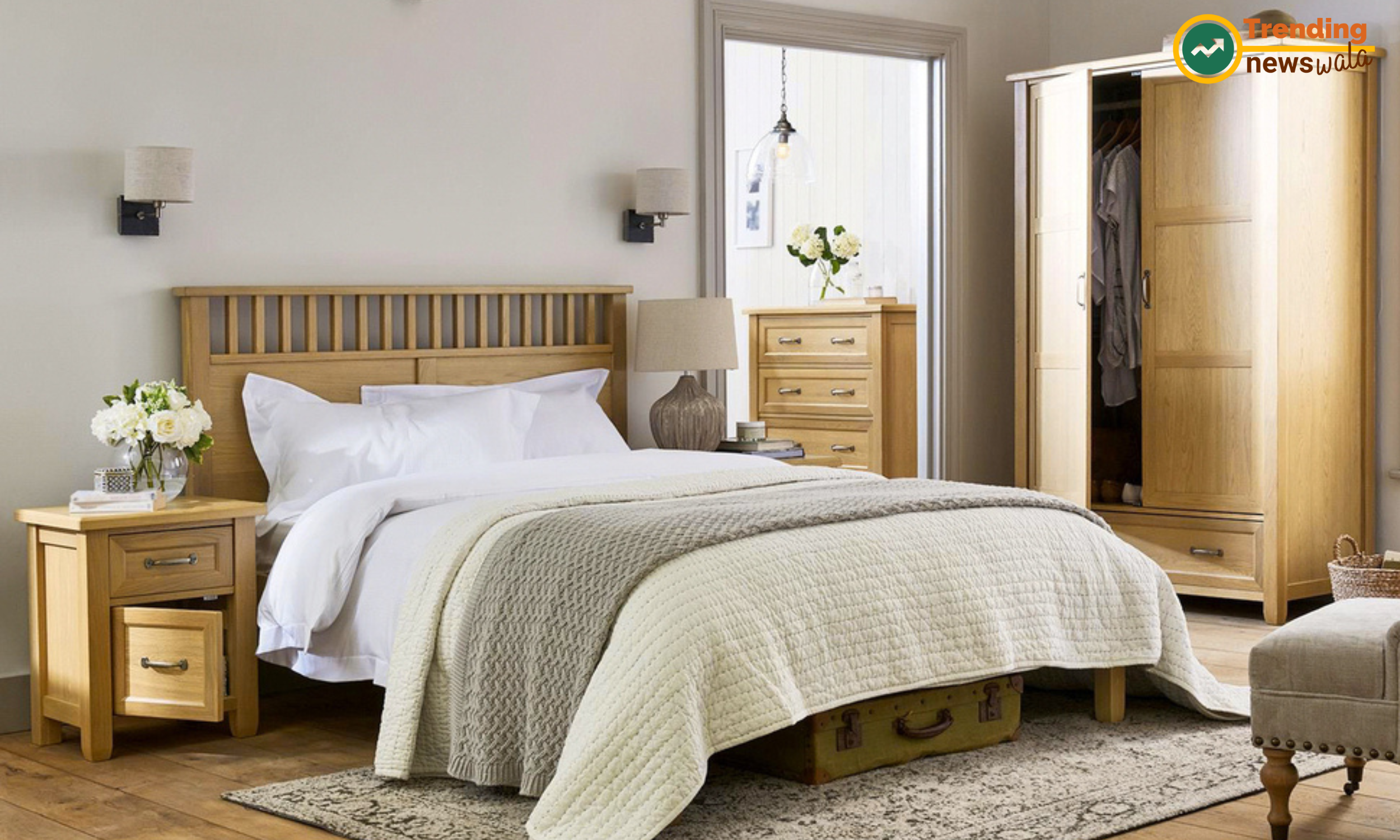
Warranty and return policies are important considerations when purchasing a bed, mattress, or bedroom furniture. They provide peace of mind and protection for your investment. Here's what to know about warranty and return policies:
Warranty:
- Manufacturer's Warranty: Many reputable mattress and furniture manufacturers offer warranties on their products. These warranties typically cover defects in materials and workmanship. The length and coverage of the warranty can vary, so read the terms carefully.
- Types of Warranties: There are different types of warranties, such as prorated and non-prorated warranties. Prorated warranties may require you to pay a portion of the repair or replacement cost over time. Non-prorated warranties usually cover the full cost within a specified period.
- Coverage: Warranty coverage may extend to specific issues like sagging, structural defects, or manufacturing flaws. Be aware that warranties may not cover normal wear and tear, accidental damage, or issues caused by improper use or care.
- Expected Lifespan: The warranty duration often reflects the expected lifespan of the product. Higher-quality products tend to come with longer warranties. Consider the warranty length when evaluating the durability and value of a product.
- Registration: Some warranties may require product registration. Follow the manufacturer's instructions to ensure your warranty remains valid.
- Fine Print: Read the warranty terms and conditions thoroughly. Understand what is and isn't covered, the process for making a warranty claim, and any associated costs.
Return Policy:
- Return Window: Check the retailer's return policy to understand the timeframe during which you can return or exchange a product. Many retailers offer a 30- to 120-day return window.
- Condition: Most retailers require that the product be in its original condition and packaging for returns. Keep all the packaging materials until you're sure you're keeping the product.
- Restocking Fees: Some retailers charge restocking fees for returns. Be aware of any potential fees and how they will affect your refund.
- Return Process: Understand the steps involved in the return process, including how to initiate a return, where to send the product, and how refunds or exchanges are processed.
- Return Costs: Consider any return shipping or pickup costs. Some retailers provide free returns, while others may require you to cover the shipping expenses.
- Refund Method: Find out how and when you'll receive your refund. It may be issued as a credit, a check, or a refund to your original payment method.
- Exclusions: Some products, especially mattresses and bedding, may have specific return restrictions due to hygiene reasons. Make sure to understand these restrictions.
- Trial Periods: If you purchased a mattress or adjustable base with a trial period, understand how the return process works within that period.
It's essential to review both the warranty and return policy before making a purchase. These policies can differ between manufacturers and retailers, so being informed ensures you have recourse if the product does not meet your expectations or if any issues arise. When possible, buy from reputable sellers with clear and customer-friendly warranty and return policies.
Trial Period
A trial period, also known as a sleep trial or comfort guarantee, is a feature offered by many mattress manufacturers and some bedding retailers. It allows customers to try a new mattress, bed base, or other sleep-related product for a specified duration in their own home. Here's what you should know about trial periods:
Key Points Regarding Trial Periods:
- Duration: Trial periods can vary in length, but they typically last between 30 and 120 nights. Some companies offer longer trial periods, especially for mattresses sold online.
- Purpose: The primary purpose of a trial period is to allow customers to evaluate the comfort and suitability of a product over an extended period of real-world use. This is especially important for items like mattresses, which can take time for your body to adjust to.
- Return Option: During the trial period, if you decide that the product is not suitable for your needs, you can return it for a refund or exchange, depending on the manufacturer's or retailer's policy.
- Conditions: Most trial periods come with specific conditions. These may include keeping the product in good condition, using a mattress protector, and not removing any law tags. Be sure to understand and follow the conditions outlined by the seller.
- Return Process: If you decide to return the product, contact the seller to initiate the return process. They will provide instructions on how to return the item, including whether you need to package it for shipping.
- Return Costs: Some companies offer free returns during the trial period, while others may charge a return fee or require you to cover the return shipping costs. Be aware of any associated costs.
- Refund Timeline: The timeline for receiving a refund or exchange varies by company. It can take several weeks to process returns and issue refunds, so be patient.
- Exclusions: Certain products, such as bedding accessories (e.g., pillows, sheets) or products purchased on clearance or final sale, may not be eligible for a trial period.
Benefits of Trial Periods:
- In-Home Testing: Trial periods allow you to assess the product in the comfort of your own home, where you can truly gauge its suitability.
- Risk Reduction: Trial periods reduce the risk of buying a product that may not meet your comfort and support needs.
- Peace of Mind: Knowing that you have the option to return or exchange the product if it doesn't meet your expectations can provide peace of mind when making a purchase.
- Adjustment Time: Some products, like mattresses, may require an adjustment period. A trial period gives you ample time to adapt to the new sleep surface.
It's important to thoroughly read and understand the terms and conditions of the trial period before making a purchase. If you decide that the product is not right for you, follow the seller's return process to ensure a smooth and hassle-free return or exchange. Additionally, consider buying from reputable companies with clear and customer-friendly trial period policies.
Remember that personal preferences play a significant role in choosing the right bed, so take your time to test different options and ensure you make an informed decision that leads to a good night's sleep and improved well-being.

Certainly, here are some frequently asked questions (FAQ) related to choosing the right bed:
What is the most common bed size, and how do I choose the right size for my bedroom?
The most common bed sizes are Twin, Full (Double), Queen, and King. To choose the right size, measure your bedroom and consider your sleeping preferences and the number of sleepers.
What's the difference between a box spring and a platform bed, and which one should I choose?
A box spring is a supportive base with springs, while a platform bed has a solid surface. The choice depends on your mattress type and personal preference. Some mattresses require a specific type of base.
How do I determine the ideal mattress firmness for my comfort and support needs?
Consider your weight, sleeping position, and personal preferences. Side sleepers may prefer a softer mattress, while back or stomach sleepers may need a firmer one.
What should I look for in a high-quality mattress?
Quality indicators include the type and quality of materials, durability, support, and comfort. Reputable brands and reading customer reviews can help you assess mattress quality.
Are there eco-friendly or organic mattress options available?
Yes, there are eco-friendly and organic mattress options made from sustainable materials and free from harmful chemicals. Look for certifications like GOTS or OEKO-TEX Standard 100.
Can I use my existing bed frame with a new mattress, or do I need a new one?
It depends on your existing bed frame's compatibility with the new mattress. Some mattresses may require specific types of support, so check with the manufacturer's recommendations.
How do I know when it's time to replace my old mattress?
Signs that it's time to replace your mattress include sagging, lumps, visible wear and tear, and discomfort. Most mattresses have a lifespan of 7-10 years.
Is it necessary to try out a mattress in a store before buying, or is online shopping a reliable option?
While trying a mattress in-store can be helpful, many reputable online mattress companies offer generous trial periods, making online shopping a viable option. Read reviews and check return policies.
Do I need to flip or rotate my mattress regularly for even wear?
Some mattresses need rotation, while others are designed to be one-sided and shouldn't be flipped. Check the manufacturer's instructions for your specific mattress.
Can I customize my bed for specific sleep needs, such as adjustable firmness or heating/cooling features?
Yes, there are customizable mattress options available that allow you to adjust firmness or add features like cooling or heating.
What is the best way to clean and maintain my mattress and bed frame?
For mattresses, regular vacuuming and spot cleaning are recommended. Bed frames should be cleaned according to the material. Consult the manufacturer's guidelines for specific care instructions.
Are there options for people with allergies, such as hypoallergenic mattresses or bedding?
Yes, there are hypoallergenic mattresses and bedding options designed to reduce allergen exposure. Look for products with allergen-resistant covers and materials.
Can I negotiate the price of a mattress when shopping in a physical store?
You may be able to negotiate the price of a mattress in a physical store, especially during sales or promotions. Online retailers may also offer discounts.
Remember that choosing the right bed is a personal decision, and it's important to consider your specific needs and preferences to ensure a comfortable and restful night's sleep.


